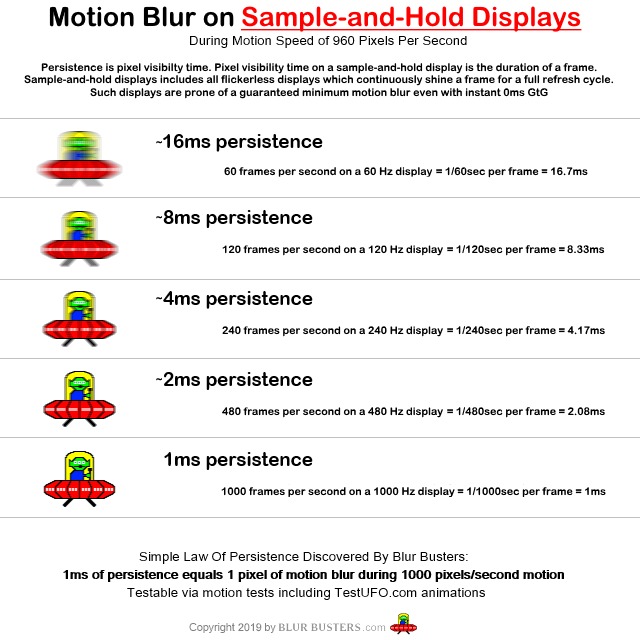Does anyone really need a 1,000 Hz gaming display?
Getty Images
Just a couple of years ago, companies like Nvidia were talking up prototype 500 Hz gaming monitors as having “benefits [for] every game and gamer, not just competitive games and esports pros.” Now, the high frame rate experts at Blur Busters bring word of a 4K, 1,000 Hz prototype screen being shown off by Chinese panel maker TCL CSOT at the manufacturer-focused DisplayWeek 2024 conference.
TCL’s proof-of-concept panel is all the more impressive for not sacrificing resolution in the name of its high frame rate—many current 480 Hz monitors tend to top out at 1080p resolutions or offer “dual mode” options for higher resolutions at lower maximum refresh rates. And while recent advancements in pixel-flipping times have enabled TCL’s LCD prototype, Blur Busters estimates that 1,000 Hz OLED displays could be commercialized as soon as 2027.
4K 1000Hz being shown off at #DisplayWeek2024 by TCL CSOT pic.twitter.com/xc2qsYocxX
— Blur Busters (@BlurBusters) May 15, 2024
The apparent, impending breaking of the four-digit refresh rate threshold got us thinking: Are we finally approaching a point of diminishing returns in monitor-makers’ long-running battle of the Hz? Or is 1,000 Hz just the latest stepping stone to realms of motion smoothness yet unimagined by most gamers?
60 fps is just the start
Research suggests that most humans stop detecting flickering in lights pulsing at around 60 Hz, a finding that has led many to erroneously claim that the human eye “can’t see beyond 60 fps.” The misunderstanding stems in part from the fact that this “flicker threshold” generally measures how a human reacts to flickering in a single light source. The eye’s reaction to the illusion of motion in a display made up of millions of individual pixels can be quite different.
A simple motion test on a high-end monitor is enough to clearly demonstrate the advantages of refresh rates beyond 60 Hz. Fast-moving on-screen objects look decidedly less blurry as you climb higher and higher on the refresh rate curve, because the pixels from the object’s previous position “persist” for less time at higher rates. This low persistence can be especially important in virtual reality displays, where motion blurring and lower refresh rates can lead to motion sickness as you tilt your head quickly around a virtual environment.

Fast-moving objects appear decidedly less blurry as you climb the frame rate curve.
Once displays get to about 1,000 Hz, that’s when Blur Busters says you start to see results where “things stop motion blurring.” But even faster refresh rates could help with the apparent sharpness of extremely fast objects on Ultra HD displays—think of a mouse pointer or video game crosshair that can move across the roughly 4,000 horizontal pixels on a 4K display in a single second. To eliminate the stroboscopic effects that can happen on objects moving that quickly, you might need a theoretical display of 10,000 Hz or more.
Of course, even with a 1,000 Hz monitor, you’ll need content running at 1,000 frames per second to take full advantage of the ultra-fast pixel-flipping hardware. While that level of performance might sound ludicrous for current hardware running any modern games, that kind of performance is no longer as unattainable as you might think. Nvidia data shows the RTX 4090 generating 600+ fps frame rates on aging-but-still-popular games like Rainbow Six Siege and Fortnite at “High” settings and a full 1440p resolution.
Factor in a few more generations of graphics card upgrades—not to mention frame-generation technology that could offer 10 reprojected frames for every key frame—and waiting a single millisecond for your monitor to show a new image might not be totally ridiculous. With the way things are going, we’re already awaiting the day, years from now, when we look back on an article like this and find it quaint that we were ever impressed by the idea of a display that topped out at a mere 1,000 Hz.

